
The international railway line between China and Russia is part of the great Trans-Siberian Railway network.
There are two trains running between China and Russia: one follows the Trans-Mongolian Railway traveling between Moscow and Beijing and crossing Mongolia; the other one goes through Manchuria, connecting Russia and China.
* indicates border stations.
(Updated on February 27th, 2020)
| Train 004 Moscow–Beijing | |||||
|---|---|---|---|---|---|
| Travel day | Day | Country | Station | Arrive | Depart |
| 1 | Tuesday | Russia | Moscow | 23:55 | |
| 2 | Wednesday | Perm | 19:48 | 20:17 | |
| 3 | Thursday | Yekaterinburg | 01:32 | 01:59 | |
| Tyumen | 06:18 | 06:38 | |||
| Omsk | 13:37 | 13:53 | |||
| Novosibirsk | 21:04 | 21:23 | |||
| 4 | Friday | Krasnoyarsk | 08:45 | 09:07 | |
| 5 | Saturday | Irkutsk | 02:28 | 02:53 | |
| Ulan-Ude | 09:57 | 10:27 | |||
| *Naushki | 14:36 | 16:26 | |||
| Mongolia | *Suhe-Bator | 22:10 | 23:55 | ||
| 6 | Saturday | Ulaanbaatar | 06:35 | 07:00 | |
| *Dzamyn Ude | 18:40 | 20:35 | |||
| 7 | Monday | China | *Erlian | 21:00 | 02:00 |
| Jining South | 06:37 | 06:55 | |||
| Beijing | 14:35 | ||||
Train station with a “*” means immigration inspection needed.
| Train 003 Beijing–Moscow | |||||
|---|---|---|---|---|---|
| Travel day | Day | Country | Station | Arrive | Depart |
| 1 | Wednesday | China | Beijing | 07:27 | |
| Jining South | 16:56 | 17:08 | |||
| *Erlian | 21:48 | 00:59 | |||
| 2 | Thursday | Mongolia | *Dzamyn Ude | 01:25 | 02:40 |
| Ulaanbaatar | 14:35 | 15:52 | |||
| *Suhe-Bator | 21:50 | 23:10 | |||
| Russia | *Naushki | 19:14 | 21:04 | ||
| 3 | Friday | Ulan-Ude | 02:14 | 02:44 | |
| Irkutsk | 09:37 | 10:22 | |||
| 4 | Saturday | Krasnoyarsk | 03:53 | 04:15 | |
| Novosibirsk | 16:00 | 16:20 | |||
| Omsk | 23:20 | 23:26 | |||
| 5 | Sunday | Tyumen | 06:29 | 06:49 | |
| Ekaterinburg | 11:28 | 11:58 | |||
| Perm | 17:20 | 17:40 | |||
| 6 | Monday | Moscow | 13:58 | ||
(Updated on February 27th, 2020)
| Train 19 Beijing–Moscow | |||||
|---|---|---|---|---|---|
| Travel day | Day | Country | Station | Arrive | Depart |
| 1 | Saturday | China | Beijing | 23:00 | |
| 2 | Sunday | Tianjin | 00:35 | 00:41 | |
| Shenyang | 08:47 | 08:55 | |||
| Harbin | 15:04 | 15:29 | |||
| 3 | Monday | *Manchuria | 04:18 | 07:01 | |
| Russia | *Zabaikalsk | 02:26 | 08:03 | ||
| Chita | 18:08 | 18:33 | |||
| 4 | Tuesday | Ulan-Ude | 04:54 | 05:20 | |
| Irkutsk | 13:25 | 13:55 | |||
| 5 | Wednesday | Krasnoyarsk | 06:35 | 07:14 | |
| Novosibirsk | 18:39 | 18:58 | |||
| 6 | Thursday | Omsk | 03:14 | 03:32 | |
| Tyumen | 10:18 | 10:38 | |||
| Yekaterinburg | 14:47 | 15:14 | |||
| Perm | 20:53 | 21:15 | |||
| 7 | Friday | Moscow | 14:13 | ||
Train station with a “*” means immigration inspection needed.
| Train 20 Moscow–Beijing | |||||
|---|---|---|---|---|---|
| Travel day | Day | Country | Station | Arrive | Depart |
| 1 | Saturday | Russia | Moscow | 23:45 | |
| 2 | Sunday | Perm | 19:48 | 20:17 | |
| Yekaterinburg | 01:32 | 01:59 | |||
| 3 | Monday | Tyumen | 06:18 | 06:38 | |
| Omsk | 13:37 | 13:53 | |||
| Novosibirsk | 21:04 | 21:23 | |||
| 4 | Tuesday | Krasnoyarsk | 08:45 | 09:07 | |
| 5 | Wednesday | Irkutsk | 02:28 | 02:53 | |
| Ulan-Ude | 10:52 | 11:22 | |||
| Chita | 22:23 | 22:48 | |||
| 6 | Thursday | *Zabaikalsk | 08:24 | 13:05 | |
| China | *Manchuria | 19:30 | 00:34 | ||
| 7 | Friday | Harbin | 12:51 | 13:17 | |
| Shenyang | 19:18 | 19:33 | |||
| 8 | Saturday | Tianjin | 03:52 | 04:08 | |
| Beijing | 05:49 | ||||
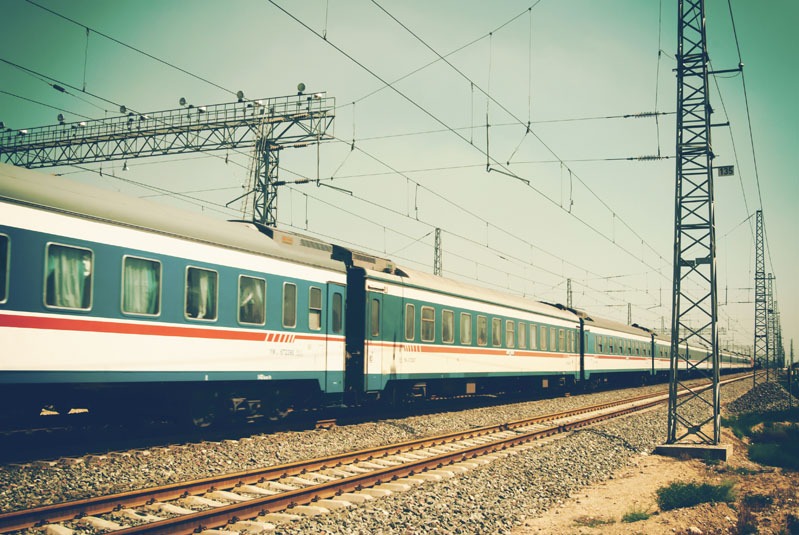
| Train 003/004 | Train 19/20 | |
|---|---|---|
| Duration | 136 hours | 149 hours |
| Operated by | China | Russia |
| Facilities | This train uses old-style cars made in Germany. There is no air-conditioning on the train. Heating is supplied. | This train uses new cars made in Russia. Amenities on board are relatively new compared with those on train 003/004. |
| Visas | Chinese visa, Mongolian visa, and Russian visa | Chinese visa and Russian visa |
| Scenery en route | The scenery en route is more appealing than that seen from train 19/20 as the train passes the Gobi Desert, Lake Baikal, and a sea of rolling steppes. | The Manchurian scenery is plain by comparison: there are more settlements, forests, mountains, and farmland. |
Before and after your train journey, it’s worth spending 3 or 4 days in Beijing — China’s capital and second largest city.
In China’s history, Beijing served as the capital city during several dynasties.
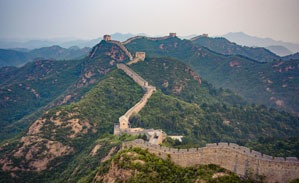
The Great Wall
Listed below are the attractions you mustn’t miss:
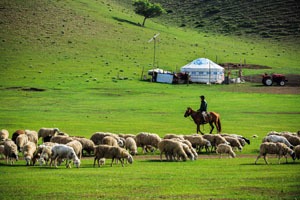
Ger Camp
Mongolia is known for its sea of rolling steppes, the Gobi Desert, and the nomadic culture. You can travel around Ulaanbaatar, the largest city and capital of this country.
If you have enough time, you can spend a night in a Mongolian ger camp, or try something more adventurous, such as camel riding across the Gobi Desert.
Located in Siberia, the ancient Lake Baikal is the deepest lake in the world. It is known as the “Pearl of Siberia” and is definitely worth a visit.
You can go boating on the lake, take a railway trip around the lake, visit lovely villages nearby, and even enjoy ice-skating in winter. People marvel at its natural beauty all year round.
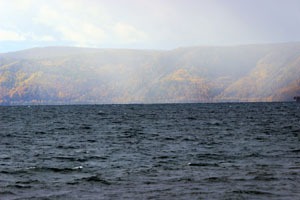
Lake Baikal
The Trans-Siberian train will take a day traveling around Lake Baikal. If you want to explore the beauty of Lake Baikal for a few days, you can get off at Irkutsk and take a bus to the nearest town, which is an hour’s drive.
Irkutsk is one of the most popular stops along the Trans-Siberian Railway.
Located 66 kilometers south of the magnificent Lake Baikal, Irkutsk is the second largest city in Eastern Siberia, with the easiest access to Lake Baikal.
The Angara River runs through the city. A number of historical sites line its banks, including ancient churches and museums.
Moscow is Russia’s capital and largest city. It’s also the country’s political, economic, cultural, and financial center.
It is worth spending 4 to 5 days in Moscow to discover its history and culture. There are many places in Moscow that you mustn’t miss.
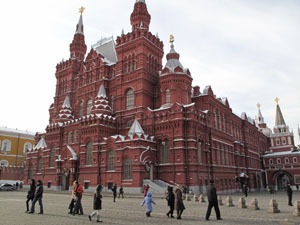
Red Square
First class compartments have two berths and second class compartments have four berths. That means you might be sharing a compartment with strangers.
If you are not comfortable with this, you can book the whole compartment. However, some people think that this is a good opportunity to mingle with fellow passengers.
Food is available throughout the journey as there is a restaurant car providing meals and drinks. However, the choice of food on board is limited and the prices are high. Therefore, it is advisable to take some food with you.
You can supplement your food supply when the train stops at the stations as there are always local people selling snacks and drinks on the platforms.
There are a few European standard power sockets in each second class car. Each first class compartment has one power socket. Be aware that you might be unable to charge your laptop adequately due to the unstable voltage. Remember to take a converter with you.
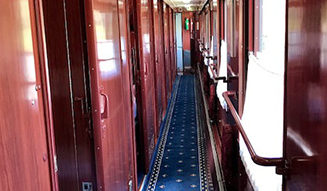
Mongolian local passenger trains mainly follow the Trans-Mongolia Line, but stop at more stations.
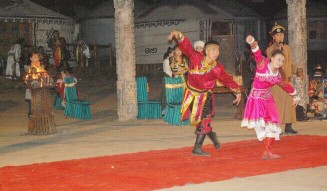
Mongolia is a Buddhist country, thus many of its traditional holidays derive from religious culture.
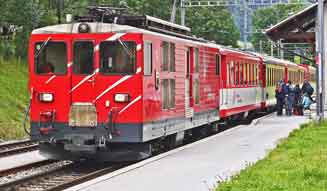
International train tickets for the Trans-Siberian can be bought in China, Mongolia and Russia.